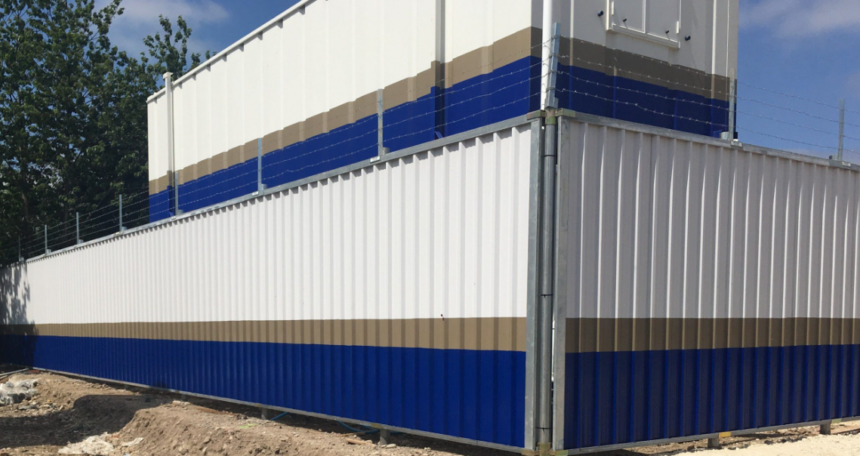Hoarding is something you see a lot in construction. When too much stuff, such as materials and equipment, starts accumulating at a job site, some people might shrug it off as no big deal or just part of the job. However, it can lead to significant issues. It can make things less safe, mess with the project’s flow, and even impact how successful the project is in the end. In this post, we’re going to talk about what hoarding can do to a construction project and share some tips on how to avoid those issues.
What is Hoarding?
The term “hoarding” describes the makeshift wall or fence that encircles a building site. The main goals of hoarding are to keep unauthorised individuals out of the building site, keep dust and waste out of public areas, and provide construction workers a safe place to work. The hoarding may also serve as a blank canvas for hoarding advertisements or graphics to draw attention to the building project or other marketing messages to the general public. The process of making hoarding graphics involves affixing sizable printed panels to the hoarding structure, resulting in a visually captivating and educational exhibit for onlookers.
The Application of Hoarding in the Construction Industry
1. Urban Development Projects
Urban development projects, including residential complexes and business districts, often utilise hoarding for site security and promotional purposes. These installations serve as a barrier to protect the public from construction hazards while offering an opportunity to showcase future developments or community benefits.
2. Infrastructure Construction
Hoarding is super important for big projects like highways, bridges, and tunnels. It keeps everyone safe—workers and folks passing by and helps keep traffic moving smoothly around construction areas, cutting down on messes and accidents.
3. Historical Renovations
When we’re fixing up old buildings, we put up barriers not just to keep the site safe and intact, but also to protect people passing by. Plus, it’s a great way to tell everyone about the history of the place and what the future plans are for this heritage spot.
4. Commercial Retail Developments
In the world of commercial retail construction, hoarding is more than just a barrier. It encloses the site but also serves as a canvas for marketing. It’s where upcoming store openings are announced, brands get to showcase themselves, and art is displayed to catch the community’s eye and drum up excitement for what’s coming.
5. Public Spaces and Parks
Construction projects within public spaces and parks use hoarding to maintain public safety, minimize environmental impact, and keep recreational areas accessible. This hoarding may include environmental messages or artwork that blends with the park’s aesthetics, enhancing the visual appeal during construction periods.
6. Educational Facilities
When we talk about building or fixing up schools, universities, and other learning spots, putting up barriers is super important to make sure everyone – students, staff, and visitors – stays safe. It’s not just about keeping the construction mess out of the way, but it can also turn into a cool opportunity to teach and inspire folks. You can use it to post updates on the construction progress, share fun historical tidbits about the place, or even put up some motivating words to cheer on the students.
7. Health Care Facilities
In hospitals, clinics, and other health spots, hoarding plays a big role in keeping things safe, secure, and chill for everyone there. Since healthcare places are super sensitive, hoardings help keep down the noise and block out stuff that could stress outpatients. They’re also great for telling people about how the changes being made are gonna help patient care, making sure everyone gets why the upgrades or fixes are happening.
Benefits of Effective Hoarding Design
Good hoarding design is so much more than just a barrier around construction sites. It’s key for making the area look better, keeping everyone safe, and acting as a great marketing tool. When done right, hoardings can turn a messy construction site into something visually appealing. It’s a chance to chat with the public, share what’s being built, highlight the future perks of the development, and even add some art to make the local area nicer. Let’s dive into why investing in top-notch hoarding design is a win-win for the community, the project, and the surroundings.
Conclusion
Hoarding in the construction world throws a wrench in a lot of things it messes with safety, makes things less efficient, scrambles resource management, doesn’t do the environment any favours, and can make client relations pretty rocky. If construction companies get wise to how bad hoarding can be and start doing something about it, they’ll see their projects turn out a lot better. They’ll build a rep for being safe and sticking to top-notch standards. Keeping job sites tidy and well-organized isn’t just good for the people involved; it’s a must for nailing project success.















